A few times a day, drink two cups of cold water on an empty stomach for weight loss.
After drinking two cups (half a liter) of water, you can get a surge of the adrenal hormone noradrenaline in your bloodstream, as if you had just smoked a few cigarettes or had a few cups of coffee, boosting your metabolic rate up to 30 percent within an hour, as shown below and at 0:22 in my video Optimizing Water Intake to Lose Weight. When put to the test in randomized controlled trials, that appeared to accelerate weight loss by 44 percent, making drinking water the safest, simplest, and cheapest way to boost your metabolism.
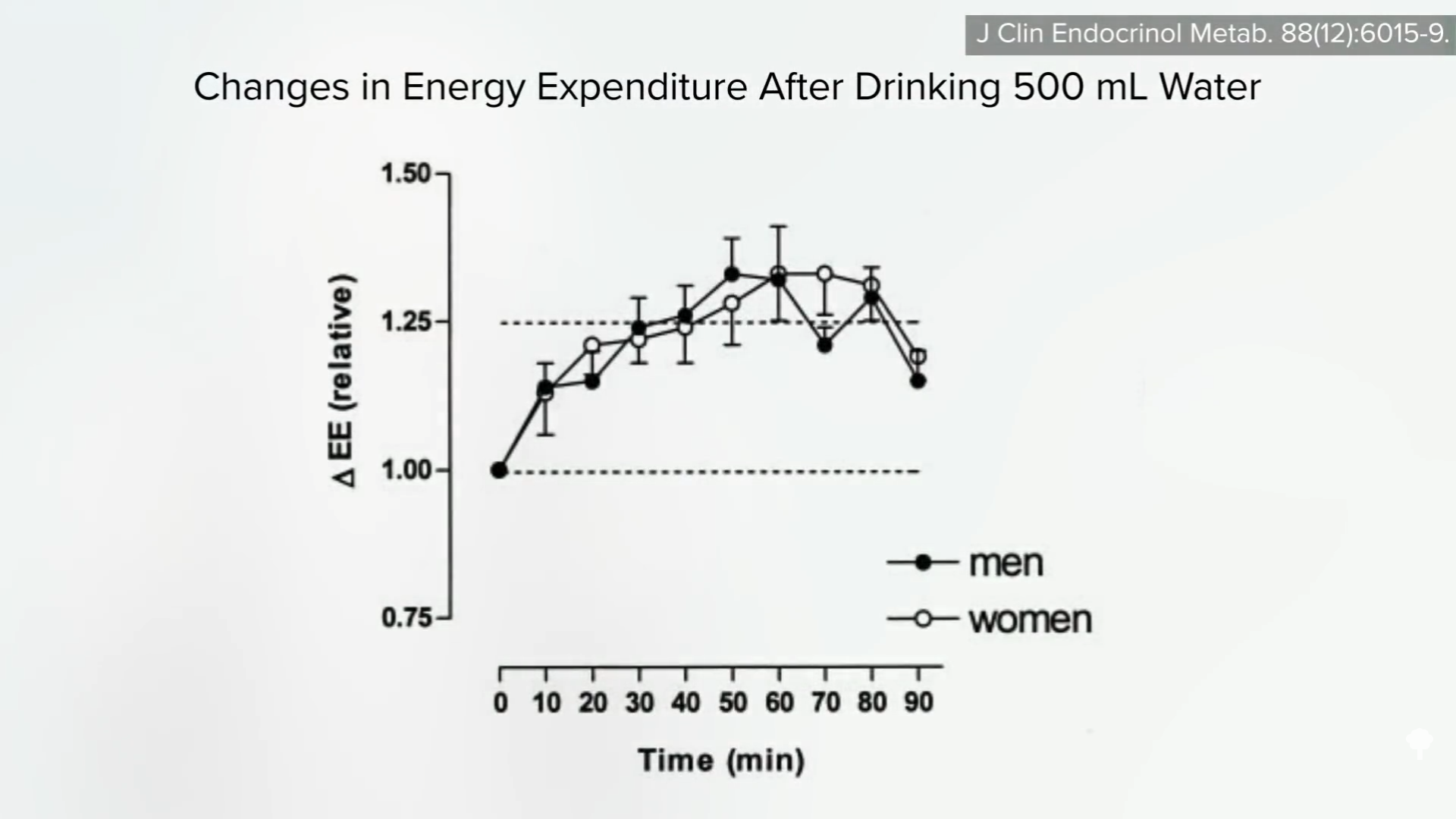
Now, this entire strategy may fail if you’re on a beta-blocker drug. (Beta blockers are typically prescribed for heart conditions or high blood pressure and tend to end with the letters lol, such as atenolol, nadolol, or propranolol, sold as Tenormin, Corgard, or Inderal, respectively.) So, for example, as you can see below and at 0:59 in my video, if you give people the beta-blocker drug metoprolol (sold as Lopressor) before they drink their two cups (480 mL) of water, the metabolic boost is effectively prevented. This makes sense since the “beta” being blocked by beta blockers are the beta receptors triggered by noradrenaline. Otherwise, drinking water should work. But what’s the best dose, type, temperature, and timing?
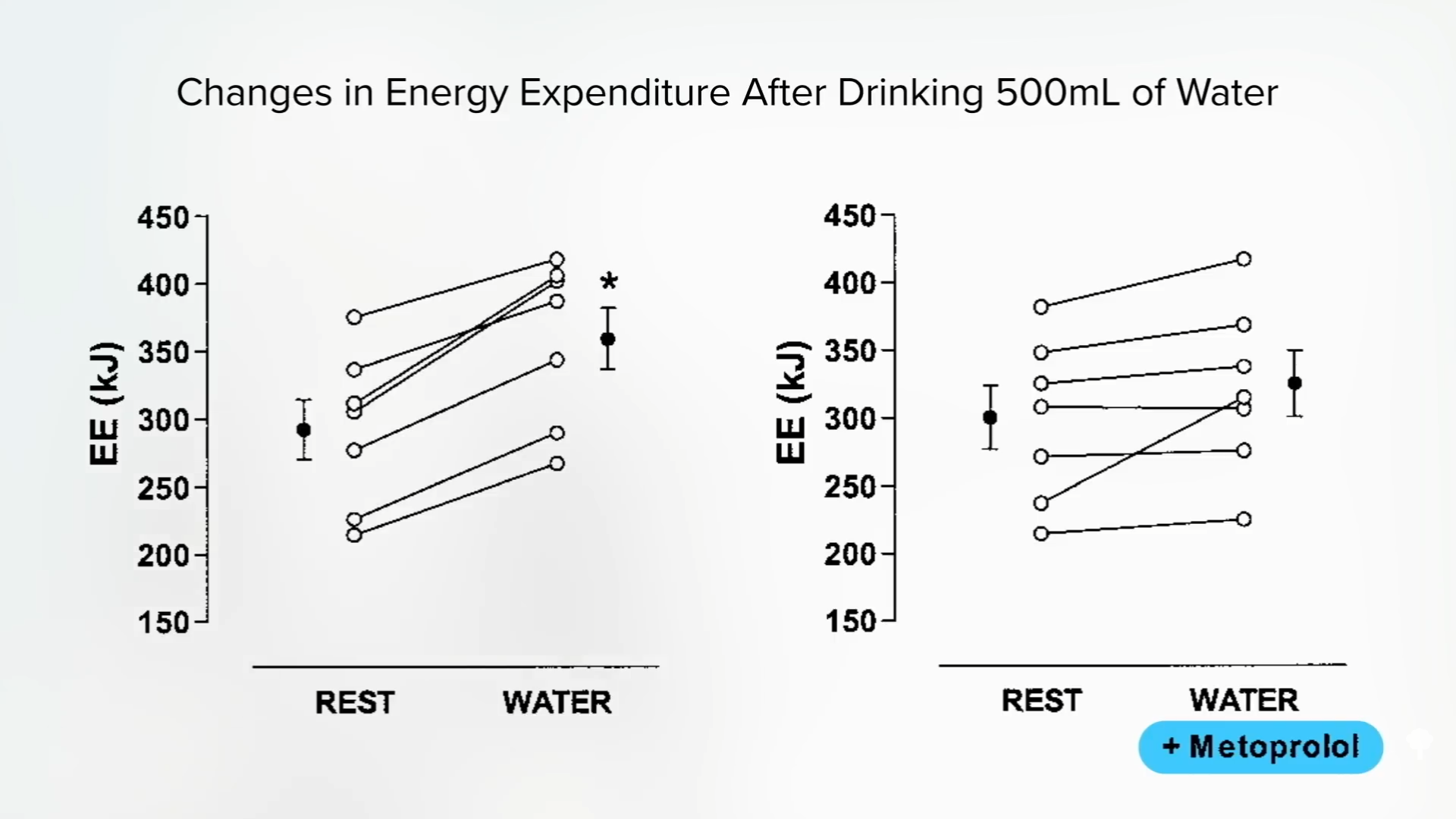
Just a single cup (240 mL) of water may be sufficient to rev up the noradrenaline nerves, but additional benefit is seen with drinking two or more cups (480 mL). A note of caution: One should never drink more than about three cups (710 mL) in an hour, since that starts to exceed the amount of fluid your kidneys can handle. If you have heart or kidney failure, your physician may not want you to drink extra water at all, but even with healthy kidneys, any more than three cups of water an hour can start to critically dilute the electrolytes in your brain with potentially critical consequences. (In How Not to Diet, I talk about a devastating, harrowing experience I had in the hospital as an intern. A patient drank himself to death—with water. He suffered from a neurological condition that causes pathological thirst. I knew enough to order his liquids to be restricted and have his sink shut off, but I didn’t think to turn off his toilet.)
Getting back to it. What kind of water are we talking about? Does it have to be plain, regular water? It shouldn’t matter, right? Isn’t water just water whether it’s flavored or sweetened in a diet drink? Actually, it does matter. When trying to prevent fainting before blood donation, drinking something like juice doesn’t work as well as plain water. When trying to keep people from getting dizzy when they stand up, water works, but the same amount of water with salt added doesn’t, as seen below and at 2:40 in my video. What’s going on?
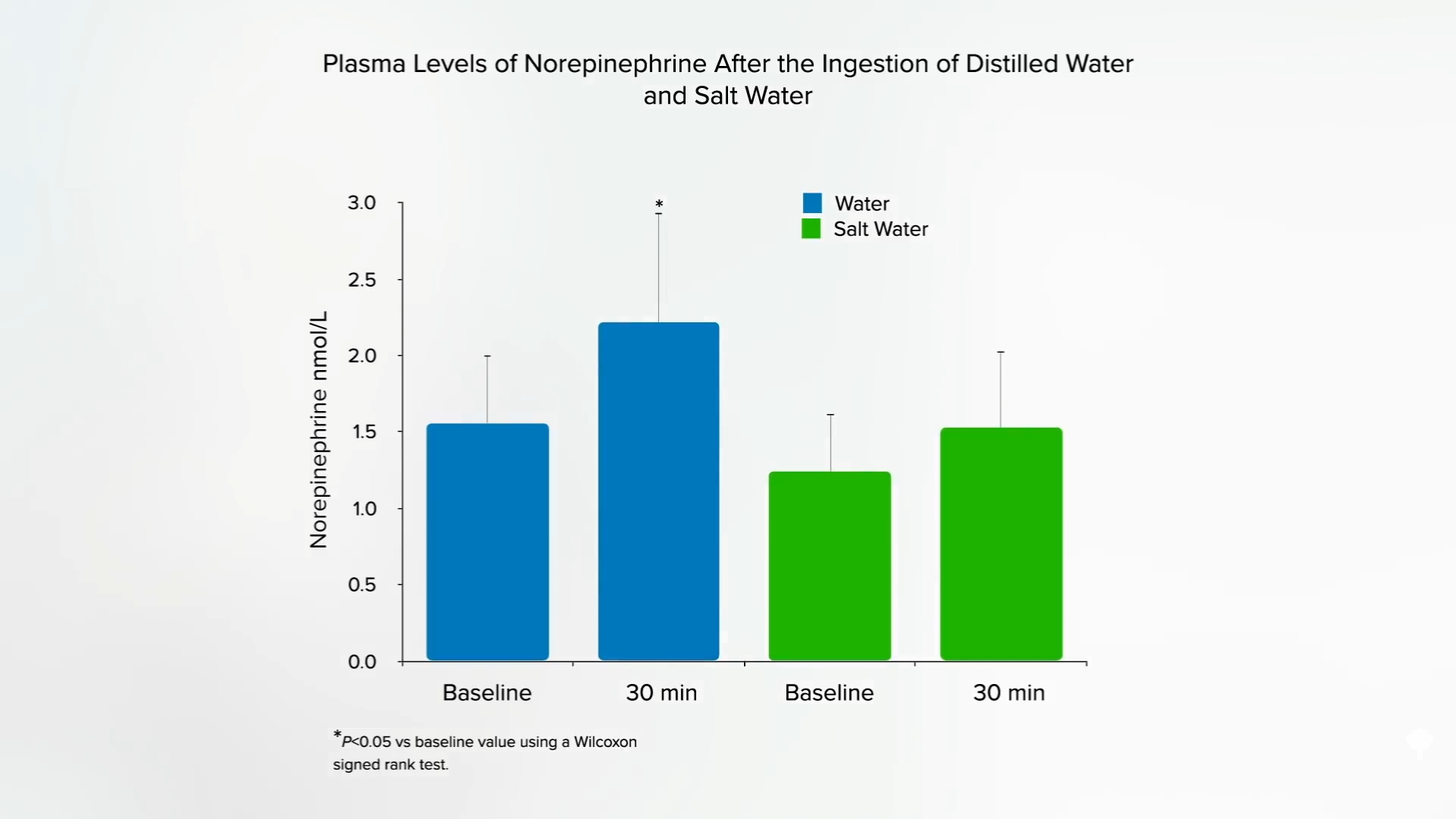
We used to think the trigger was stomach distention. When we eat, our body shifts blood flow to our digestive tract, in part by releasing noradrenaline to pull in blood from our limbs. This has been called the gastrovascular reflex. So, drinking water was thought to be a zero-calorie way of stretching our stomachs. But, instead, if we drink two cups (480 mL) of saline (basically salt water), the metabolic boost vanishes, so stomach expansion can’t explain the water effect.
We now realize our body appears to detect osmolarity, the concentration of stuff within a liquid. When liquids of different concentrations were covertly slipped into people’s stomachs via feeding tubes, detection of plain water versus another liquid was demonstrated by monitoring sweat production, which is a proxy for noradrenaline release. It may be a spinal reflex, as it’s preserved in people who are quadriplegic, or picked up by the liver, as we see less noradrenaline release in liver transplant patients (who’ve had their liver nerves severed). Whichever the pathway, our body can tell. Thought we only had five senses? The current count is upwards of 33.
In my Daily Dozen recommendation, I rank certain teas as among the healthiest beverages. After all, they have all the water of water with an antioxidant bonus. But, from a weight-loss perspective, plain water may have an edge. That may explain the studies that found that overweight and obese individuals randomized to replace diet beverages with water lost significantly more weight. This was chalked up to getting rid of all those artificial sweeteners, but, instead, it may be that the diet drinks were too concentrated to offer the same water-induced metabolic boost. As you can see below and at 4:29 in my video, diet soda, like tea, has about ten times the concentration of dissolved substances compared to tap water. So, plain water on an empty stomach may be the best.
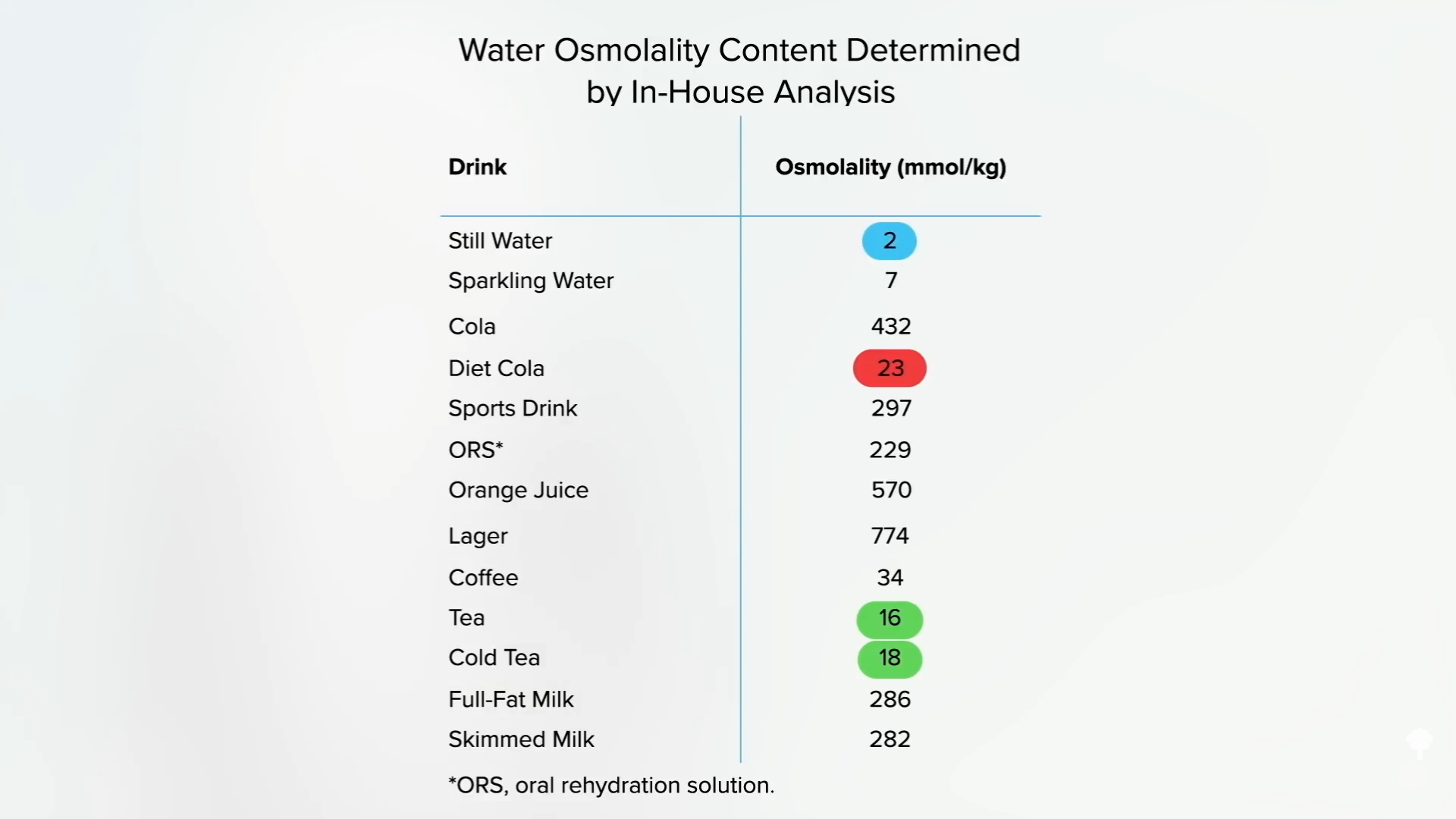
Does the temperature of the water matter? In a journal published by the American Society of Mechanical Engineers, an engineering professor proposed that the “secret” of a raw food diet for weight loss was the temperature at which the food was served. “Raw food, by its very nature, is consumed at room temperature or lower.” To bring two cups (480 mL) of room-temperature water up to body temperature, he calculated the body would have to dip into its fat stores and use up 6,000 calories. Just do the math, he says: A calorie is defined as the amount of energy required to raise one gram of water one degree Celsius. So, since two cups of water are about 500 grams and the difference between room temp and body temp is about a dozen degrees Celsius, it’s about 500 x 12 = 6,000 calories needed.
Do you see the mistake? In nutrition, a “calorie” is actually a kilocalorie, a thousand times bigger than the same word used in the rest of the sciences. Confusing, right? Still, I’m shocked that the paper was even published.
So, drinking two cups of room-temperature water actually takes only 6 calories to warm up, not 6,000. Now, if you were a hummingbird drinking four times your body weight in chilly nectar, you could burn up to 2 percent of your energy reserves warming it up, but it doesn’t make as much of a difference for us.
What about really cold water, though? A letter called “The Ice Diet” published in the Annals of Internal Medicine estimated that eating about a quart (1 L) of ice—like a gigantic snow cone without any syrup—could rob our body of more than 150 calories, which is the “same amount of energy as the calorie expenditure in running 1 mile.” It’s not like you directly burn fat to warm up the water, though. Your body just corrals more of the waste heat you normally give off by constricting blood flow to your skin. How does it do that? Noradrenaline.
If you compare drinking body-temperature water, room-temperature water, and cold water, there’s only a significant constriction in blood flow to the skin after the room-temperature water and the cold water, as seen below and at 6:39 in my video.
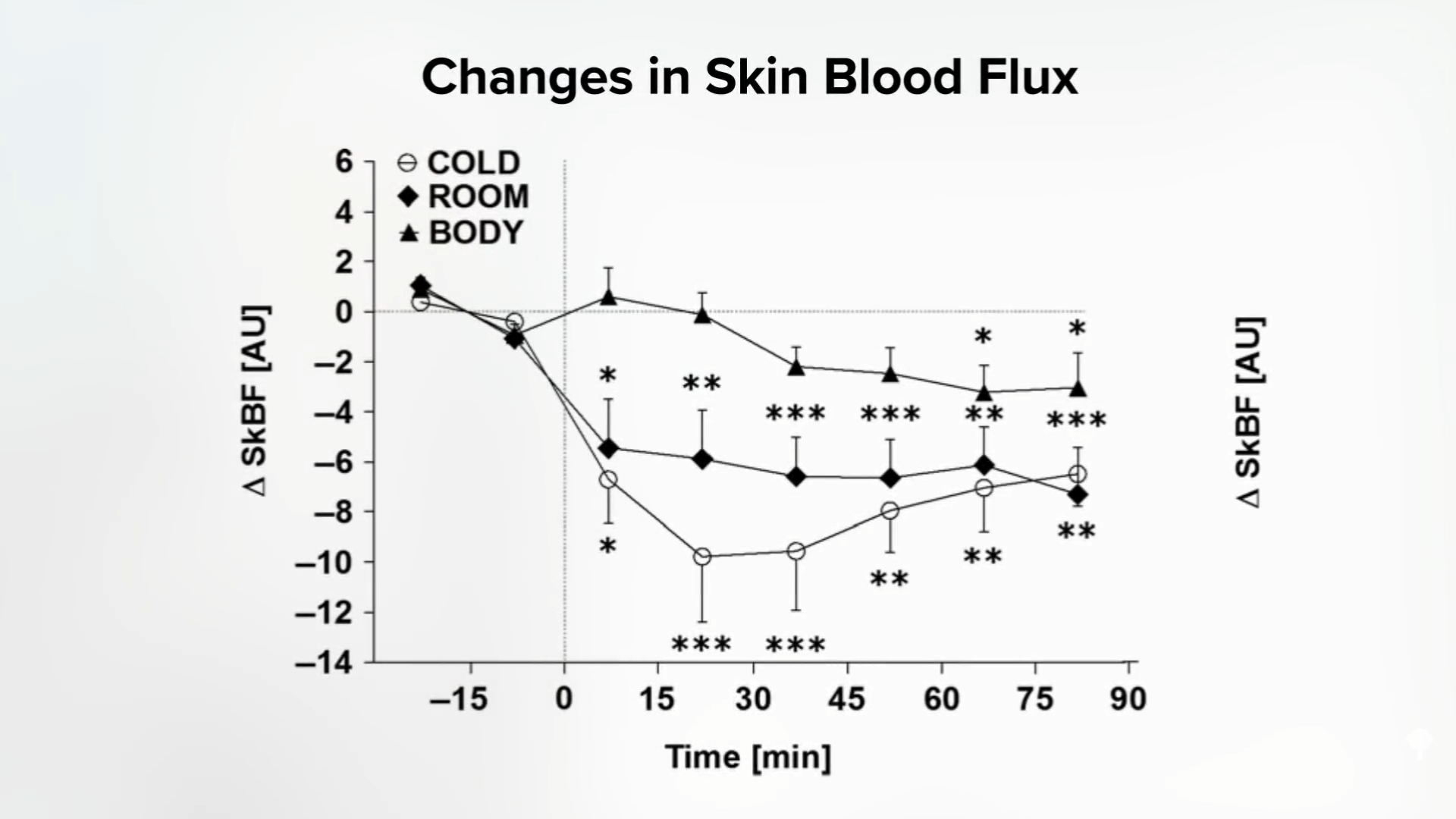
What’s more, as you can see here and at 6:45 in the video, neither the warm nor tepid water could boost metabolic rate as much as cold (fridge temperature) water. Our body does end up burning off more calories when we drink our water cold (at least indirectly).
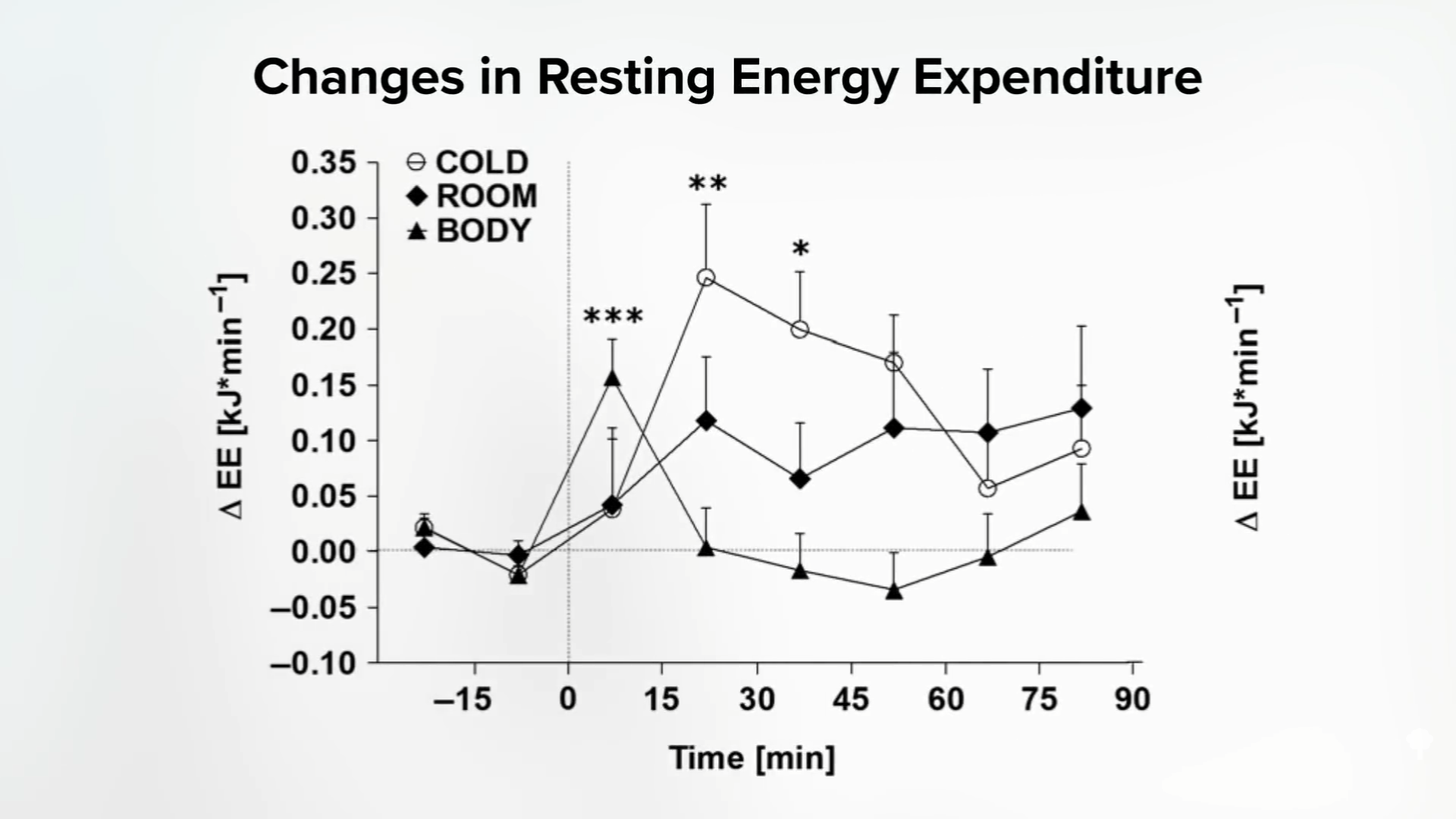
So, two cups of cold water on an empty stomach a few times a day. Does it matter when? Yes, watch my Evidence-Based Weight Loss lecture to see how you can add the benefit of negative-calorie preloading by drinking that water right before your meals.
Too good to be true? No. Check out my other three videos on water and weight loss in the related posts below.















